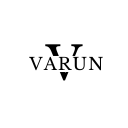You’re in a tiny Berlin co-working café, laptop open, head full of dreams and doubts. You’ve sketched an app on a napkin. Your idea feels exciting—but fuzzy. This is where the Lean Canvas steps in, like a sharp pencil in a room full of crayons.
The Lean Canvas is a one-page business model that captures the essence of your idea in a single snapshot. Created by Ash Maurya in 2010, it was built as a startup-focused alternative to the Business Model Canvas. Where the latter paints broad organisational strokes, Lean Canvas is a scalpel for slicing through uncertainty.
Why Lean Canvas Exists
Let’s not sugarcoat it—most startups fail. Not for lack of brilliance, but from building solutions no one needs. The Lean Canvas counters this by forcing founders to ask the hard questions early:
- Who are you solving for?
- What problems are worth solving?
- Why should anyone care?
Maurya’s own words say it best: “Life’s too short to build something nobody wants.”
A Tool Built for Speed and Clarity
Unlike traditional business plans that stretch into dozens of pages and weeks of work, the Lean Canvas invites you to grab a pen, sit down, and in twenty minutes or less—sketch your strategy.
At its core, it consists of 9 blocks:
- Problem
- Customer Segments
- Unique Value Proposition
- Solution
- Channels
- Revenue Streams
- Cost Structure
- Key Metrics
- Unfair Advantage
Each block is a trigger—not a filler. It’s meant to spark investigation, not decoration.
Real-World Example: QuickBite
Let’s anchor this in reality. Meet QuickBite—our fictional food delivery startup born out of frustration with late lunches and soggy fries.
QuickBite’s First Lean Canvas (Sketch Version)
- Problem: Long delivery times, inconsistent quality, lack of restaurant options during peak lunch hours.
- Customer Segments: Tech employees in Berlin’s co-working spaces.
- Unique Value Proposition: “Hot, local, and always on time.”
- Solution: Real-time order batching, curated restaurant partners, smart delivery routing.
- Channels: Instagram ads, partnerships with office parks, referral programmes.
- Revenue Streams: Delivery fees + restaurant commissions.
- Cost Structure: Driver incentives, cloud infra, restaurant partner support.
- Key Metrics: Time-to-delivery, repeat orders per week, NPS.
- Unfair Advantage: Exclusive delivery contracts with key office parks and founders’ experience in logistics.
In twenty minutes, QuickBite went from chaos to clarity. And that’s precisely the magic of Lean Canvas.
Lean Canvas vs Business Model Canvas
Think of Lean Canvas as the younger, leaner cousin. Business Model Canvas is ideal when you already have a stable product or a more complex organisation. Lean Canvas strips the fat and adds startup-relevant blocks like “Problem,” “Solution,” and the elusive “Unfair Advantage.”
When to Use It
- Idea validation
- Early-stage startup planning
- Customer discovery
- Pitch preparation
- Product strategy pivot
It’s a living document. Meant to be updated, iterated, torn apart, and rebuilt. Every time QuickBite ran a pilot in a new neighbourhood, they revisited the canvas. They changed the Customer Segment from freelancers to office teams. They added a new Channel—partnering with local gyms. The canvas grew as they grew.
Free Templates to Get Started
- PDF Lean Canvas Template: Download it here
- Editable Notion Board: Add to your workspace
- Online Generator: Fill online and export
Final Thoughts
Lean Canvas isn’t a prophecy. It’s a mirror. It reflects your thinking, your blind spots, and your boldest hypotheses. Use it not to impress investors, but to impress upon yourself the clarity of thought required to build something real.
QuickBite started with a napkin sketch and a Lean Canvas. The rest? Lunch history.
